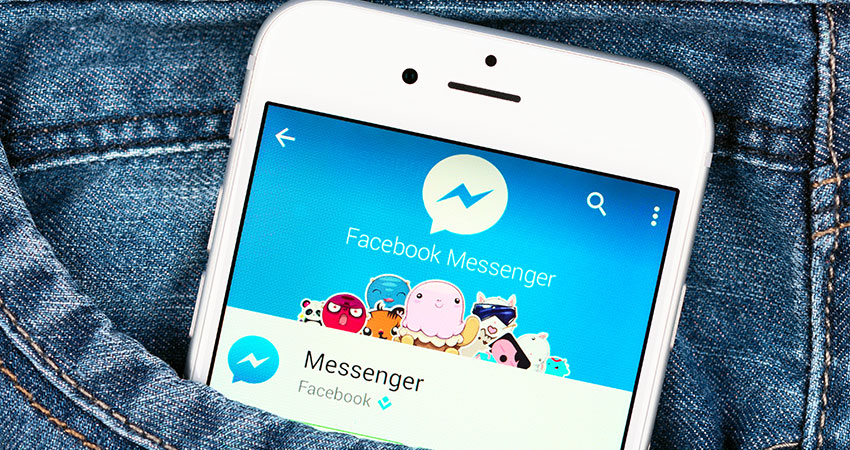With 79% of the U.S. population owning at least one social profile, social media marketing has firmly entrenched itself as a primary channel for most consumer businesses, and especially so with ecommerce marketers.
Social marketing is relatively easy to implement and, depending on your strategy, can be considerably low cost. But today, with so many social platforms and various options for audience engagement, it can be difficult to determine what to embrace, and what to ignore.
As always, knowing your audience will help determine the platforms you want to utilize and how to connect with potential customers. However, once that is narrowed down you are likely left with a number of options for audience engagement: Feed posts, stories, boosted posts, ads and more. A lot of social trends come and go, but one that promises staying power is Facebook Messenger marketing.
Right now, over 90% of teens and 80% of adults use messaging apps to communicate with each other. Social is no longer just a place to share, it’s a place to communicate. According to Facebook, 56% of people would rather use messenger tools to communicate with a brand representative vs. speaking over the phone, and 53% of shoppers are more likely to buy from brands that they can message with directly.
With Facebook Messenger marketing, ecommerce companies can connect with shoppers and site visitors directly through Facebook chatbots, creating a new channel for engagement. Similar to email marketing, Messenger outreach can be personalized and highly automated through a variety of available tools, making it a potentially high ROI for marketing.
When a consumer interacts with a brand, an effective Messenger campaign will enable merchants to contact them directly with recommendations like returning to an abandoned cart or offers such as a discount on product they viewed on site.
While it all sounds pretty simple to implement, there are some best practices and important things to consider as you incorporate Facebook Messenger marketing into your ongoing strategy:
Opt-In Campaigns
Before you can leverage the benefits of Facebook Messenger marketing, it’s important to receive explicit consent to contact consumers via this channel. Fortunately, for marketing purposes, this actually provides an extra opportunity to connect with your email subscribers.
Once your Messenger program is ready to fly, it’s time to run an easy opt-in campaign. This is achieved by simply building an email that alerts subscribers to this new feature and encourages them to sign up. Make sure to visually show them how to opt in; to make this more enticing, offer them a discount.
Recover Abandoned Carts
Around 70% of consumers will abandon their online shopping carts, leaving $260 billion to be recovered if marketers strategize correctly. Facebook Messenger marketing can be a great tool to combat abandonment. Send a message that reminds shoppers of what they left behind, ideally within 12 hours. If a consumer is engaging with your online store, it’s important to reach out while the interest is fresh. While timing is important, you should avoid pouncing as soon as they leave your site.
On its own, Messenger is a great way to encourage shoppers to make a purchase, but it can also be an effective compliment to your email marketing strategy. Just be careful not to inundate your customers with messages on every channel; coming across as too pushy will likely cause them to take their money elsewhere. However, with a little finesse, adding Messenger to your omnichannel marketing strategy can help drive more revenue.
Copy Strategy
With Facebook Messenger marketing, the aim is to drive more conversions through personalized interaction with shoppers who engage with your web store. Since contacting someone through Facebook is a more personal experience than email, it’s very important to make sure you come across as friendly and conversational, rather than generic and robotic. With automated messaging, it’s easy to fall into that latter category. With the right touches, however, you can provide a seamless brand experience for shoppers.
Here are four tips that will help when trying to make the right impression:
- Be personal. If you’re able to address the shopper by name, do it.
- Get to the point. Short and simple is best. Don’t write so much that the consumer has to scroll.
- Don’t be pushy. Make sure to send messages that come off as encouraging and not aggressive.
- Be thankful. Showing a little gratitude (“Thanks for stopping by!”) can help solidify a positive reputation with shoppers.
Use these best practices as the framework for your Facebook Messenger marketing strategy and you’ll be on the path to improved social results and converting otherwise lost sales.
Erika Jolly Brookes is CMO of Springbot

